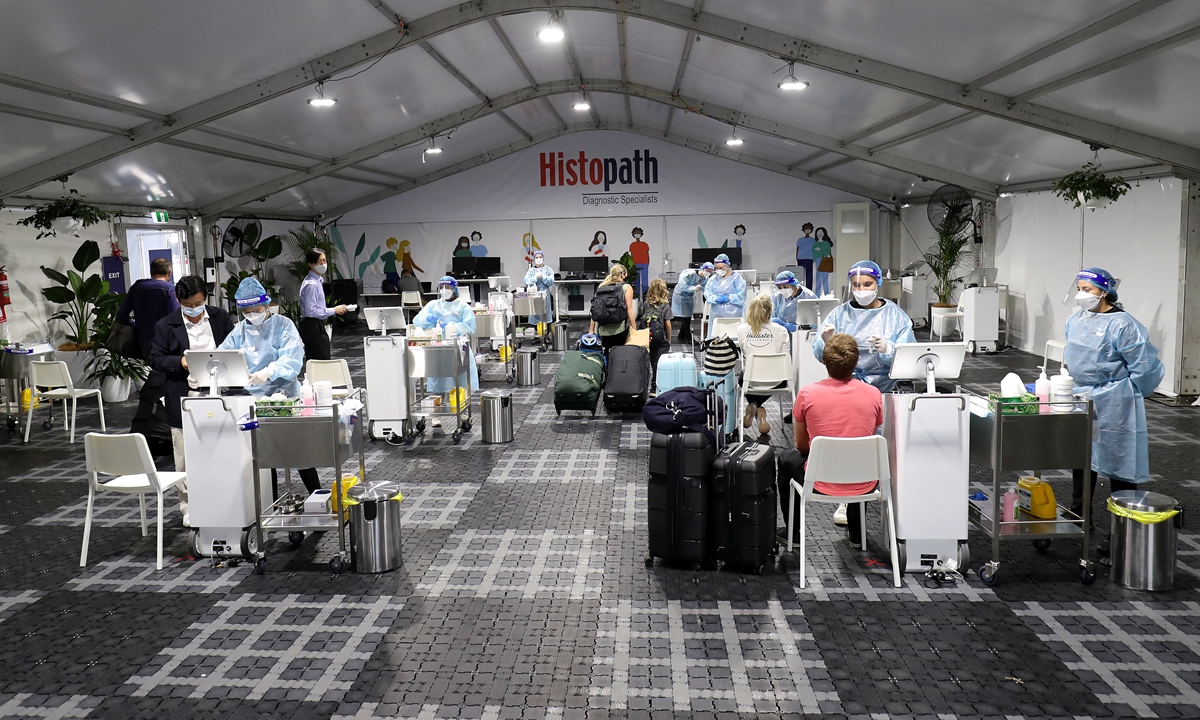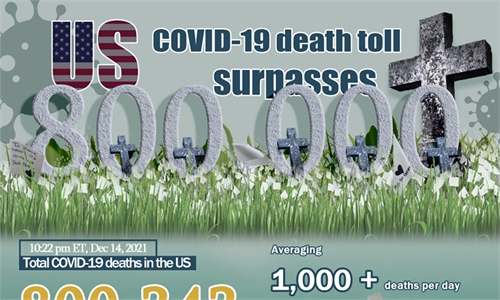Experts urge caution on health measures as Christmas holiday nears
Omicron wave looms over Australia

Travelers receive COVID-19 tests ahead of their flights at a Histopath testing clinic at Sydney Airport in Sydney, Australia on December 7, 2021. The Omicron variant of COVID-19, first identified in southern Africa, has now been detected in countries from the US to Australia, underscoring the difficulties of curtailing contagious new strains. Photo: VCG
As Australians crowd into shopping centers to buy last-minute Christmas presents and prepare to gather with their families over the summer holidays, the nation is simultaneously facing a looming wave of the Omicron variant of COVID-19.
The latest surge in cases has hit hardest in the state of New South Wales (NSW). On Thursday, the nation's most populous state recorded 1,742 new locally acquired cases of COVID-19, an increase from the previous day's 1,360 cases.
This state has seen daily increases of 50 percent each day this week. State health authorities have attributed the surge to the Omicron variant and predicted daily cases could reach 25,000 by January.
Chair of biostatistics and epidemiology at the University of South Australia, Professor Adrian Esterman, told the Xinhua News Agency that according to his own modeling, as of Thursday, the virus had an effective reproduction number in NSW of 2.12, indicating cases would double every 3.7 days. "The last time we saw a reproduction this high was July 17, during the early stages of the Delta wave, but now we are seeing exponential growth of a much higher base level of cases," Esterman said.
The state had promptly closed its borders to a number of Southern African countries after the first cases of Omicron were detected in late November. This also prompted the federal government to delay the scheduled opening of borders to international students and skilled workers.
Two weeks later, despite the sharp spike of COVID-19 cases and several super spreader events involving Omicron, the federal government has stuck to the scheduled reopening of its borders, and the NSW government has forged ahead, shifting the responsibility of avoiding infection on to the individual. From Wednesday, there was no longer a legal requirement to wear masks in most indoor settings and unvaccinated people were allowed to enter nonessential venues.
"No one wants to isolate over the Christmas period, so take personal responsibility, socially distance, follow the rules that are in place," said NSW Premier Dominic Perrottet.
Professor Mary-Louise McLaws, an epidemiologist from the University of New South Wales, told Xinhua that while little is known about the new variant, besides its increased transmissibility even among the vaccinated, the government should be cautious.
"Making assumptions that we don't need to respond, and that everything will be fine, I think is not right," McLaws said. "[Governments] prefer to think that they should focus on the economy, because it's been a couple of difficult years for them. But they have to really put that into context and work out how they can reduce the risk of ever going back into lockdown," she said.
Esterman said the rapid spread of the Omicron variant, despite Australia's very high vaccination rate, was an indicator that vaccination alone was insufficient to prevent a major outbreak.
He believed the government should make efforts to continue with health measures that would not have a large impact on businesses and the bringing forward of booster shots.
"There is a high probability that ATAGI [Australian Technical Advisory Group on Immunization] will shorten the time from second dose to booster to try and put the brakes on the increasing number," he said.

